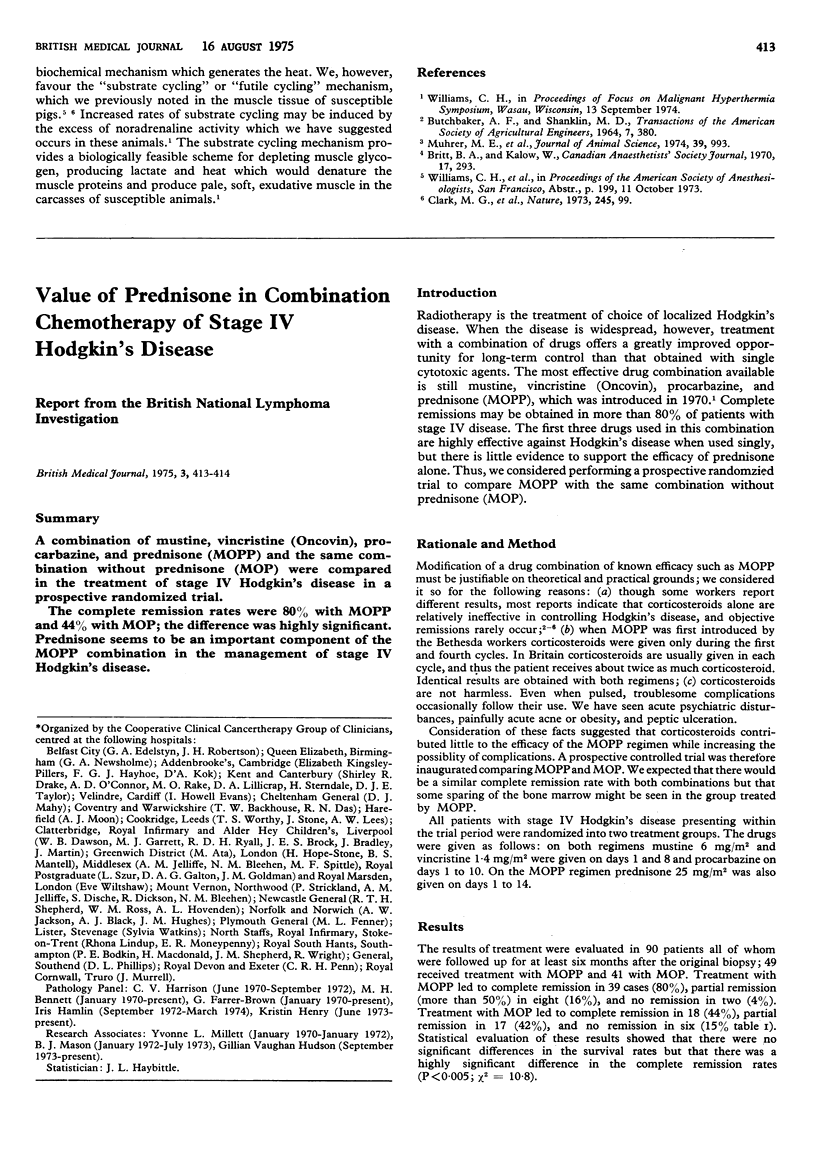Abstract
Pigs susceptible to the fulminant hyperthermia-stress syndrome spontaneously developed the hyperthermia syndrome. Basal metabolic rates 10-fold higher than normal were observed in these animals. The metabolic rate exceeded a 17-fold increase over normal with a total heat production of over 28.25 J (6;76 kcal) h-1 kg-1. Heat loss by radiation ceased early in the syndrome, possibly owing to intense peripheral vasoconstriction--a finding which suggests that in man vasodilators might have an important therapeutic role.
Full text
PDF


Selected References
These references are in PubMed. This may not be the complete list of references from this article.
- Britt B. A., Kalow W. Malignant hyperthermia: a statistical review. Can Anaesth Soc J. 1970 Jul;17(4):293–315. doi: 10.1007/BF03004694. [DOI] [PubMed] [Google Scholar]
- Clark M. G., Williams C. H., Pfeifer W. F., Bloxham D. P., Holland P. C., Taylor C. A., Lardy H. A. Letter: Accelerated substrate cycling of fructose-6-phosphate in the muscle of malignant hyperthermic pigs. Nature. 1973 Sep 14;245(5420):99–101. doi: 10.1038/245099a0. [DOI] [PubMed] [Google Scholar]


